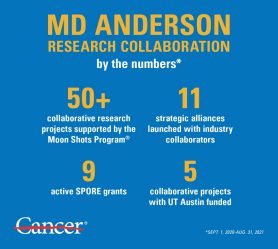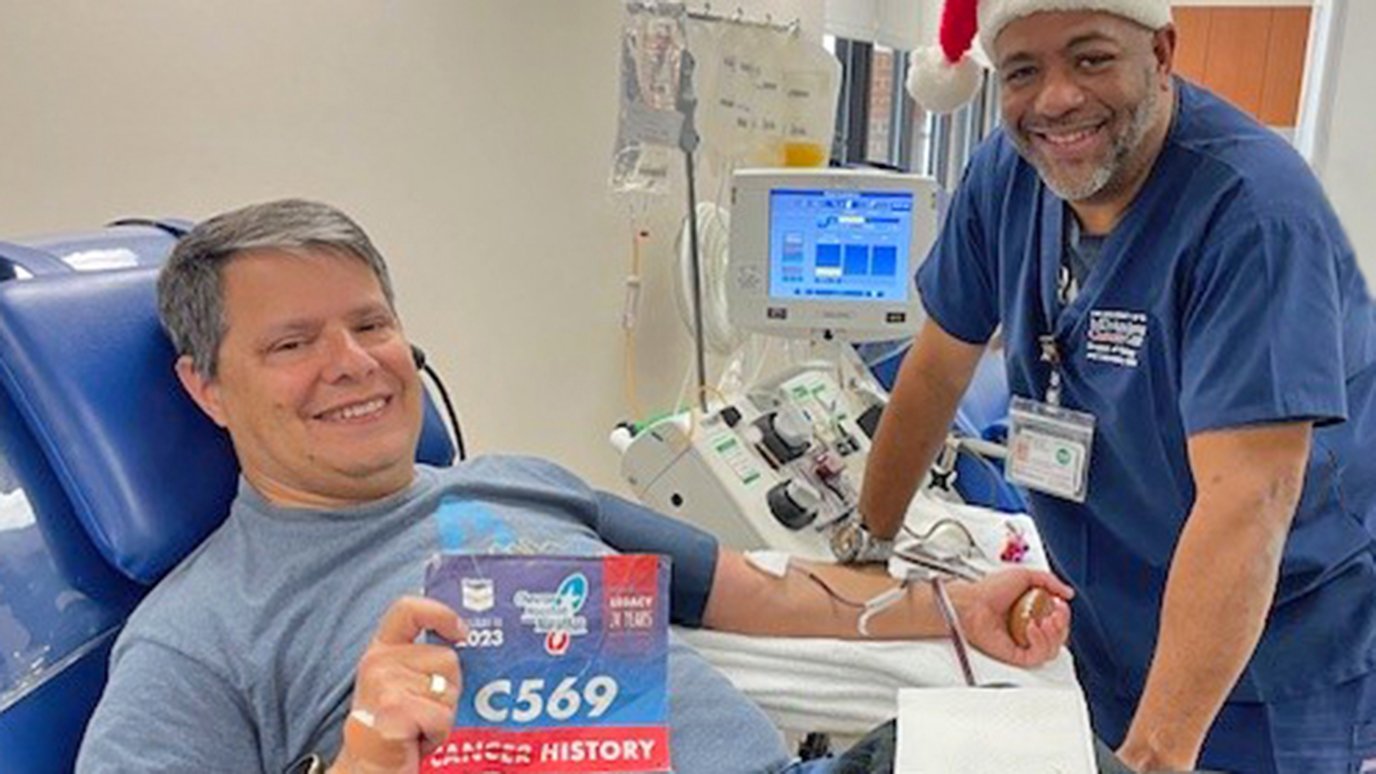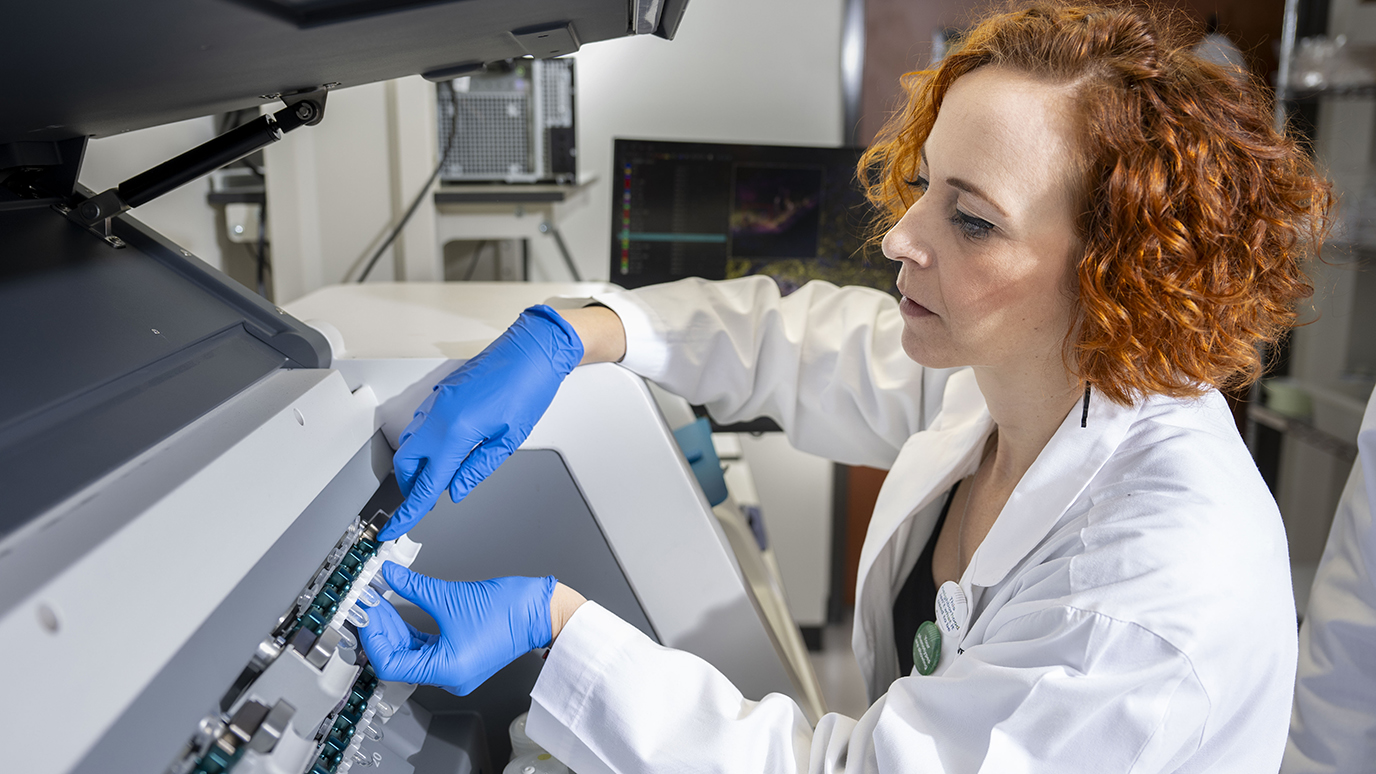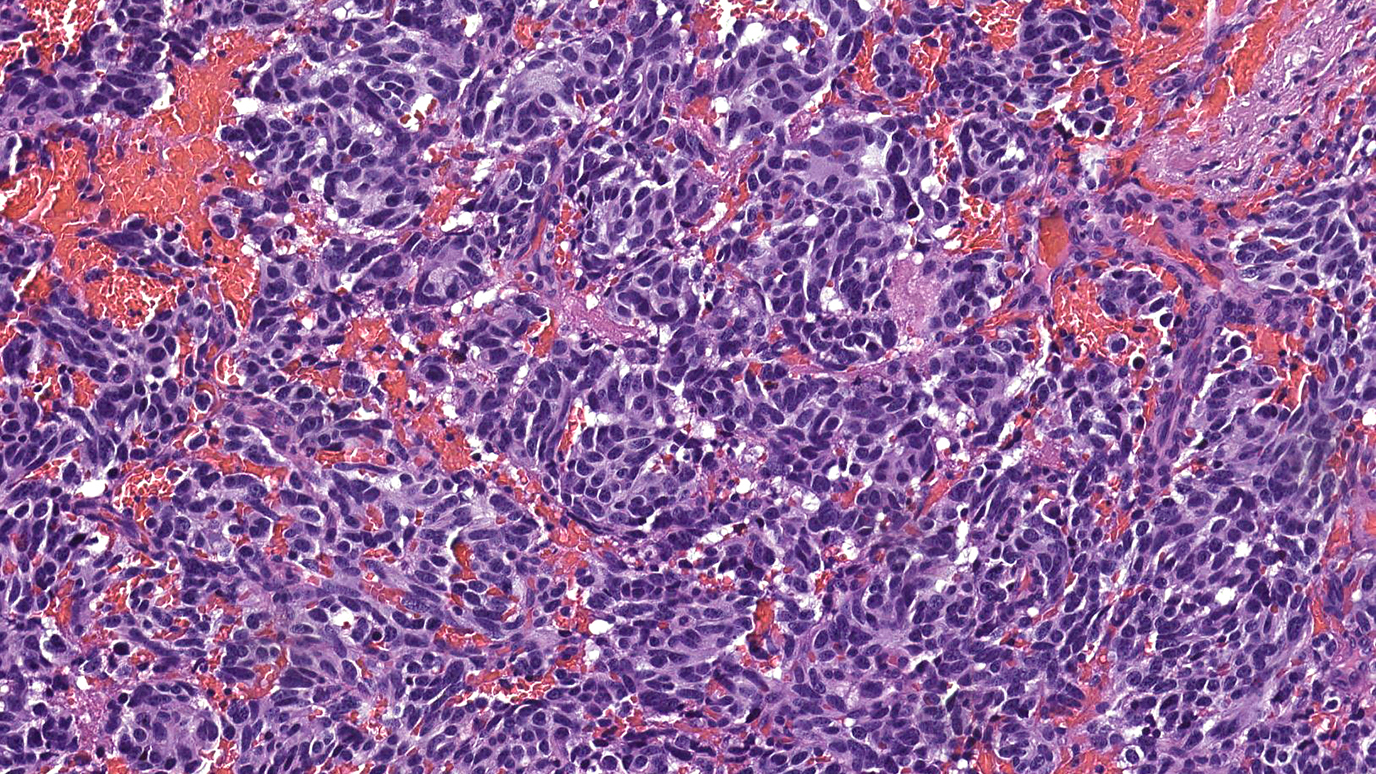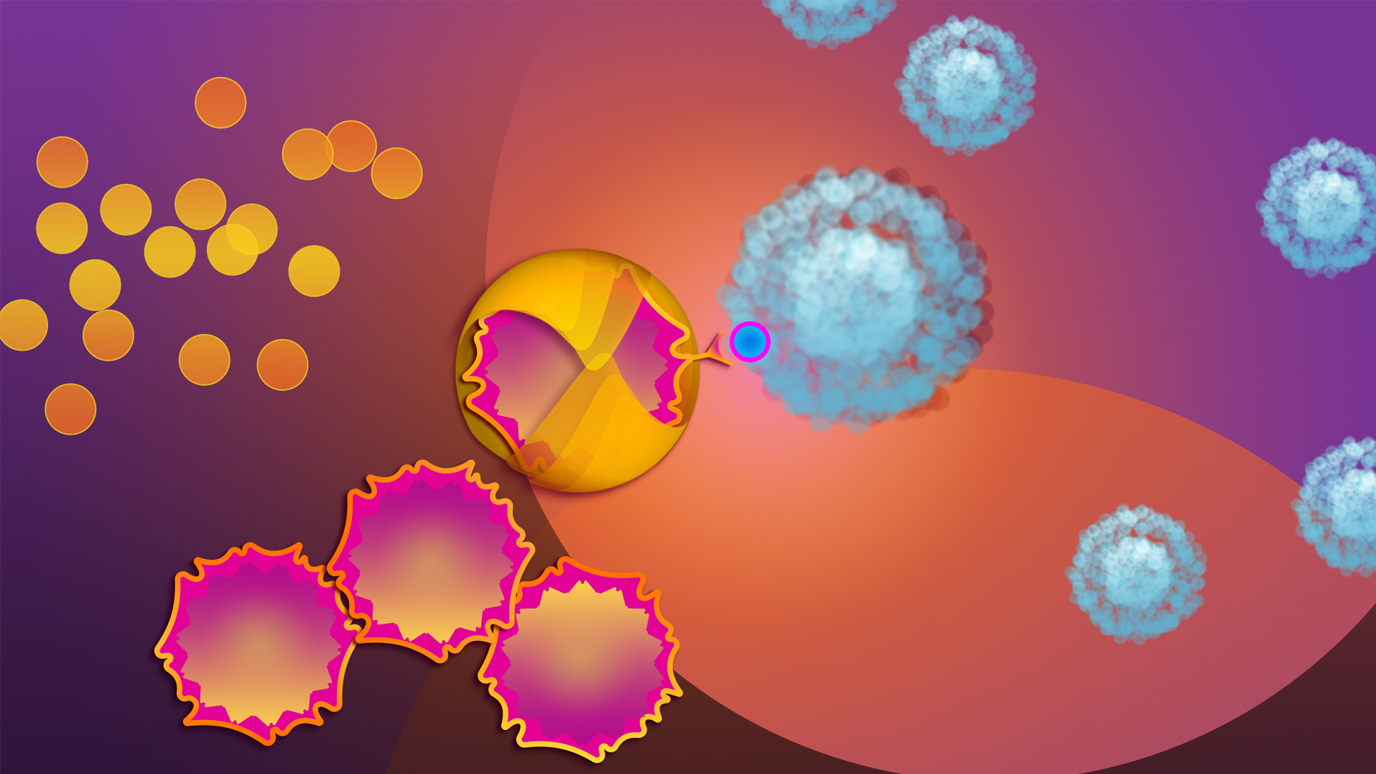- Diseases
- Acoustic Neuroma (14)
- Adrenal Gland Tumor (24)
- Anal Cancer (68)
- Anemia (2)
- Appendix Cancer (16)
- Bile Duct Cancer (26)
- Bladder Cancer (72)
- Brain Metastases (28)
- Brain Tumor (232)
- Breast Cancer (714)
- Breast Implant-Associated Anaplastic Large Cell Lymphoma (2)
- Cancer of Unknown Primary (4)
- Carcinoid Tumor (8)
- Cervical Cancer (160)
- Colon Cancer (166)
- Colorectal Cancer (118)
- Endocrine Tumor (4)
- Esophageal Cancer (44)
- Eye Cancer (36)
- Fallopian Tube Cancer (8)
- Germ Cell Tumor (4)
- Gestational Trophoblastic Disease (2)
- Head and Neck Cancer (14)
- Kidney Cancer (128)
- Leukemia (342)
- Liver Cancer (50)
- Lung Cancer (286)
- Lymphoma (278)
- Mesothelioma (14)
- Metastasis (30)
- Multiple Myeloma (100)
- Myelodysplastic Syndrome (60)
- Myeloproliferative Neoplasm (6)
- Neuroendocrine Tumors (16)
- Oral Cancer (100)
- Ovarian Cancer (172)
- Pancreatic Cancer (160)
- Parathyroid Disease (2)
- Penile Cancer (14)
- Pituitary Tumor (6)
- Prostate Cancer (146)
- Rectal Cancer (58)
- Renal Medullary Carcinoma (6)
- Salivary Gland Cancer (14)
- Sarcoma (238)
- Skin Cancer (296)
- Skull Base Tumors (56)
- Spinal Tumor (12)
- Stomach Cancer (64)
- Testicular Cancer (28)
- Throat Cancer (92)
- Thymoma (6)
- Thyroid Cancer (98)
- Tonsil Cancer (30)
- Uterine Cancer (82)
- Vaginal Cancer (18)
- Vulvar Cancer (20)
- Cancer Topic
- Adolescent and Young Adult Cancer Issues (20)
- Advance Care Planning (12)
- Biostatistics (2)
- Blood Donation (18)
- Bone Health (8)
- COVID-19 (362)
- Cancer Recurrence (120)
- Childhood Cancer Issues (120)
- Clinical Trials (632)
- Complementary Integrative Medicine (22)
- Cytogenetics (2)
- DNA Methylation (4)
- Diagnosis (232)
- Epigenetics (6)
- Fertility (62)
- Follow-up Guidelines (2)
- Health Disparities (14)
- Hereditary Cancer Syndromes (126)
- Immunology (18)
- Li-Fraumeni Syndrome (8)
- Mental Health (116)
- Molecular Diagnostics (8)
- Pain Management (62)
- Palliative Care (8)
- Pathology (10)
- Physical Therapy (18)
- Pregnancy (18)
- Prevention (920)
- Research (392)
- Second Opinion (74)
- Sexuality (16)
- Side Effects (608)
- Sleep Disorders (10)
- Stem Cell Transplantation Cellular Therapy (216)
- Support (402)
- Survivorship (322)
- Symptoms (182)
- Treatment (1786)
How MD Anderson is powering breakthroughs in cancer research
5 minute read | Published January 12, 2022
Medically Reviewed | Last reviewed by an MD Anderson Cancer Center medical professional on January 12, 2022
Scientific discoveries are essential to driving advances in cancer care. From better screening and diagnostic techniques to innovative new therapies and survivorship programs — all rely on impactful research.
That is why MD Anderson is focused on Breakthroughs as a central theme of our Strategy. Discovery research is the engine for progress in our mission to end cancer and to maximize our impact on humanity.
“We are leading high-impact studies across all areas of cancer science to gain a comprehensive understanding of the disease and address unmet medical needs,” says Giulio Draetta, M.D., Ph.D., MD Anderson’s chief scientific officer. “However, we realize now more than ever that our research cannot stand alone. Collaboration is critical to translate our discoveries into meaningful outcomes for our patients.”
If discovery research is the engine, collaborations are the fuel to power breakthroughs.
That’s why MD Anderson is establishing innovative new collaborations within and outside the institution to turbocharge our efforts and accelerate progress for our patients, even amid the changing needs of our world.
Collaboration central to MD Anderson’s research culture
Part of what makes MD Anderson unique is the opportunity for experts across many disciplines to work seamlessly together, without barriers, toward a common goal.
“Team science is a defining characteristic of MD Anderson’s research environment. It unites discovery, translational, prevention and clinical research to connect fundamental biology with clinical insights and deliver breakthroughs for patients,” says Jennifer Litton, M.D., vice president for Clinical Research.
This is evident in long-standing initiatives like the Moon Shots Program®, which established multidisciplinary teams focused on answering specific questions around a particular cancer type. Similarly, MD Anderson leads the nation in Specialized Programs of Research Excellence (SPOREs), awarded by the National Institutes of Health to fund disease-focused teams.
Newer efforts all are built upon this same cornerstone of team science, which has become the MD Anderson way. The initiatives below are just a few examples that reinforce the evolving culture of collaborative research at MD Anderson:
- Patient Mosaic™ focuses on comprehensive profiling and data analysis from thousands of consenting patients to fuel new research and better inform individualized cancer care.
- Rare Tumor Initiative is a multidisciplinary effort to comprehensively characterize rare tumors throughout the course of each patients’ care in order to develop more effective treatments.
- Pre-Cancer Atlas is an innovative research effort to generate a biological roadmap of pre-cancer development in order to identify strategies for intercepting cancer in its earliest stages.
“The collaborative spirit at MD Anderson has given my team the ability to quickly implement innovative technologies to identify key molecular features for uterine cancer development and response to hormone treatment,” says Melinda Yates, Ph.D., associate professor of Gynecologic Oncology and Reproductive Medicine and a member of the Pre-Cancer Atlas team. “When research is a team sport, we’re able to advance exponentially faster with outstanding experts every step of the way.”
Aligning with leading institutions to accelerate the mission
Although MD Anderson is home to many of the leading minds in science and medicine, progress cannot be made in a vacuum.
“We have intentionally and thoughtfully established collaborations with a number of leading academic and corporate research institutions to leverage complementary expertise and infrastructure for a shared commitment to ending cancer,” says Philip Jones, Ph.D., vice president of Therapeutics Discovery, Research Strategy and Operations.
In 2020, MD Anderson and two institutes at The University of Texas at Austin – the Oden Institute for Computational Engineering and Sciences and the Texas Advanced Computing Center (TACC) – announced a new initiative to align mathematical modeling and advanced computing with oncology expertise to collaborate on new approaches that can improve patient outcomes. The initial five projects under this collaboration launched in Fiscal Year 2021, joining experts from each institution to address specific questions of unmet need. A second round of projects was announced in November 2021.
MD Anderson and UT Austin also have established a formal collaborative research program to facilitate and fund cross-disciplinary research collaborations, initially focused on early-onset colorectal cancer, neuroscience and population health. The research projects are co-led by investigators from each institution.
MD Anderson also joined five premier cancer institutions in the launch of Break Through Cancer – a foundation devoted to “collaborating for cures.” Together with Dana-Farber Cancer Institute, the Sidney Kimmel Comprehensive Cancer Center at Johns Hopkins, the Koch Institute for Integrative Cancer Research at MIT, and Memorial Sloan Kettering Cancer Center, MD Anderson researchers will work in collaborative teams across institutions to tackle historically challenging cancers. Initial programs will focus on pancreatic cancer, ovarian cancer, glioblastoma and acute myeloid leukemia.
Industry collaborations fuel innovation
Strategic collaborations with biotechnology, pharmaceutical and health care companies also are essential components to MD Anderson’s mission.
“Our relationships with industry enable us to advance innovative new solutions – drugs, diagnostics, devices, technologies – more quickly than we can alone. These collaborations are truly symbiotic, serving to ultimately benefit our patients,” says Ferran Prat, J.D., Ph.D., senior vice president of Research Administration and Industry Relations.
In the last fiscal year, MD Anderson launched 11 strategic alliances with industry collaborators. Each is unique, but they all bring together the research expertise and clinical infrastructure of MD Anderson with the skills and insight of the industry collaborator. Many of these are focused on new therapies, developed by the company or perhaps by MD Anderson researchers or the institution’s Therapeutics Discovery division.
To further accelerate new therapies, MD Anderson also helped launch the Cancer Focus Fund, LP — a first-of-its-kind investment fund focused on supporting the development of promising new medicines. Many small to midsize biopharma companies have trouble funding early-stage clinical studies and designing effective trials. This fund addresses those problems by providing investments for compelling treatments together with the clinical trials expertise and infrastructure of MD Anderson.
Finally, the institution announced an innovative collaboration with Syntropy to better connect data from all facets of research — clinical, laboratory, biospecimens, imaging — and more effectively draw meaningful insights. The collaboration is part of MD Anderson’s renewed focus on gathering, safeguarding and utilizing the vast amounts of data within the institution for the benefit of our patients.
“Ultimately, there is a simple answer to explain the importance of collaboration: our patients. It is impossible for an individual researcher, no matter how exceptional, to provide expertise across so many realms with the urgency we know is needed for our patients and their families,” Yates says.
Request an appointment at MD Anderson online or by calling 1-877-632-6789.
Related Cancerwise Stories

When research is a team sport, we’re able to advance exponentially faster with outstanding experts every step of the way.
Melinda Yates, Ph.D.
Researcher
